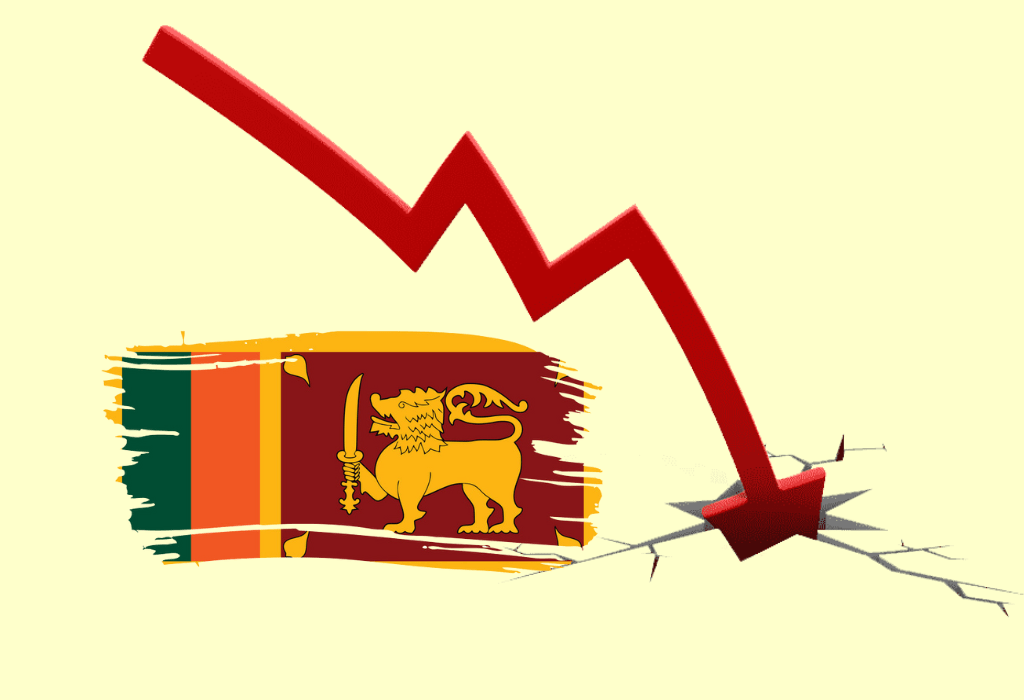We are a little late in covering the Sri Lankan Economic Crisis. But we did not want to just scratch the surface and present an overview of the situation. We were analyzing the situation to share distinctive insights that matter to you as an investor.
In this article, you will learn-
- How one unwise move can lead to other wrong decisions
- Why it is important to have a right management at the helm
- What boatloads of debt can do to the entire country and its rippling effects?
Sri Lanka, an island country famous for its picturesque beaches, breezy hill stations, rich culture, clean streets, and heritage structures is now facing the worst economic crisis since its independence in 1948. The reason is the country’s enormous foreign debt of ~$50 Bn.
The country is now facing acute shortages of essentials like food, electricity, lifesaving medicines, fuel, etc. Price of items like rice and sugar has skyrocketed to Rs. 300 per kg, 400gm milk powder is available for Rs. 790 according to media reports.
Though the crisis has just surfaced, you can trace the beginning of this downturn to 2006.
What happened in 2006?
An article in Firstpost noted, “In 2006, after the end of the civil war, the Sri Lankan government tried to accelerate growth in island nation by borrowing heavily and attracting foreign capital by propping up the Sri Lankan rupee. This helped in the short-term and the economy boomed. Lifting 1.6 million people out of poverty.”
This sounds like fantastic news. In fact, it is. Lifting 1.6 million people out of poverty is a remarkable achievement for an economy like Sri Lanka. However, this exuberant growth came at the cost of foreign debt of whopping 119% of the GDP. This means if Sri Lanka’s GDP was Rs. 100* the foreign debt was Rs. 119.
*Please note the illustration is just for information purposes only. The lower denominations are for the ease of understanding.
During Mahinda Rajapaksa’s regime, the former Sri Lankan President, the government borrowed heavily, which increased the country’s fiscal deficit.
A String of Wrong Decisions
Too Much China Debt
Despite the country’s worsening economic condition, Sri Lanka continued financing its ambitious infrastructure development projects under Mahinda Rajapaksa’s presidency (2005-2015). One such project was the international port development in the Hambantota district.
The former Sri Lankan government took large investment loans from state-owned Chinese banks to finance infrastructure development projects.
The government believed the Hambantota project would help its economy become a busy trade hotspot like Singapore. However, corruption in the project led the Sri Lankan government to surrender the port’s control to China as collateral after it defaulted on loan repayments.
According to New York Times, over the last decade, Sri Lanka accumulated a debt of $5 billion to China alone.
Tax Cut in 2019
Gotabaya Rajapaksa ousted Maithripala Sirisena to win the presidential election in November 2019. Soon after the election, Gotabaya announced a sweeping tax cut ahead of parliamentary ballot.
His cabinet almost halved the value added tax (VAT) from 15% to 8% and eliminated seven other taxes, including 2% nation building tax that businesses paid. This substantially depleted the government’s revenue.
These tax cuts didn’t bode well with the credit rating agencies. They downgraded Sri Lanka’s credit rating in early 2020. As a result, the country lost access to international financial markets. So, the government started using its foreign reserves to meet debt obligations.
Ban on Chemical Fertilizers and Agrochemicals
Amidst the ailing economic conditions, Gotabaya took another decision that sent inflation soaring through the rough. He declared a ban on the import of chemical fertilizers and agrochemicals to promote ‘organic only’ farming in the country on 29th April 2021.
While the decision was for a noble cause and to alleviate pressure on the forex reserves, it didn’t feel like a well-thought-out plan. Agriculture experts disapproved the move as ill-advised and unscientific.
Farmers expressed fears that such a policy shift could lead to steep drop in yields. And that’s what happened. According to a report published in The Week, the yield dropped 25% hitting outputs of tea, pepper, cinnamon, and vegetables badly. This drop in output sent the Sri Lankan government to foreign countries asking for rice and other staple food items.
Coronavirus Ate Up the Foreign Reserves
As we mentioned earlier, Sri Lanka is famous for its clean streets, breezy mountains, beaches and more. But a series of church bombings in 2019 that led to the killing of almost 300 people including foreign nationals halted the thriving tourism sector.
Tourism, previously worth $4.4 bn, has been a pivotal contributor to Sri Lanka’s economy. Moreover, it’s a primary source of foreign currency that adds to the foreign reserves of the country.
In 2018, the tourism industry earned ~$5.6 bn that helped Sri Lanka manage its $10 bn trade deficit. But COVID-19-led travel bans and series of shutdowns took away all the foreign money that tourists brought in.
The island nation attracts a significant number of tourists from both Russia and Ukraine. When Sri Lanka was hoping to attract tourists after travel bans were removed, Russian invasion of Ukraine slowed the industry’s recovery.
In addition to this, Sri Lankan exports of tea and rubber plummeted because of lower demand. Sri Lankans working abroad lost their jobs during the same period, further decreasing foreign exchange reserves.
Beginning of the Worse
Sri Lanka plunging into a crisis hit the news in March this year when the government announced a 13-hour power cut daily. The government tried saving energy amid the ongoing crisis, but it irked the Sri Lankan public.
The power cuts left Sri Lankans without jobs and thousands flocked the streets to protest the power cuts over the next few weeks. Gotabaya declared an emergency on April 1, 2022. The Sri Lankan Cabinet resigned soon after the emergency law was imposed. That prompted Gotabaya to revoke the law.
Currently, the Sri Lankan government is in talks with the International Monetary Fund for a bailout plan. IMF had indeed assessed its accumulated debt as unsustainable.
With not enough finance to run the country, skyrocketing inflation, schools cancelling exams, acute shortage of essentials, lifesaving medicines, and the government having no clear plan to restore the country’s economy, Sri Lanka’s future relies in IMF’s hands.
Sri Lanka has $25bn worth foreign loans of which $7bn is due for repayment this year with the remaining payable by 2026. The World bank has promised to provide $600mn to help Sri Lanka meet its essential import payments.
As Sri Lanka stares at bankruptcy India plans to step-up its economic aid focusing on humanitarian requirements after supplying fuel, medicines, and rice early this year.
India has given ~$3bn to Sri Lanka since January 2022 via currency swaps, credit lines for essentials, and loan deferments.
The Sri Lankan cabinet cleared a proposal to source more fuel from India through a short-term loan from the Exim Bank of India of $200mn.
Lessons for You – The Investor
The story of Sri Lankan crisis is full of lessons for investors.
- An investor should not invest just because a company is coming up with growth initiatives like new product launches, territory extension, etc. Not every growth initiative or a project that company may take yield expected results.
- Keep an eye on how a company intends to finance its growth initiatives. Financing new projects using debt is fine but understand if the project holds merit. Study how the company intends to fulfill its debt obligations in the future. It’s a major red flag if a company axes an existing revenue stream.
- The Sri Lankan economic crisis highlights the importance of having a visionary management at helm. Without an intelligent head(s), it’s difficult for a company to function smoothly despite all other things in line.
Read more: How Long-term investing helps create life-changing wealth – TOI.
How useful was this post?
Click on a star to rate it!
Average rating 0 / 5. Vote count: 0
No votes so far! Be the first to rate this post.
I’m Vinay Mahindrakar, an experienced content creator with
an affinity for writing on personal finance and other financial content. I
love to write on equity investing, retirement, managing money, and more.
-
Vinay Mahindrakarhttps://www.equentis.com/blog/author/vinay/
-
Vinay Mahindrakarhttps://www.equentis.com/blog/author/vinay/
-
Vinay Mahindrakarhttps://www.equentis.com/blog/author/vinay/
-
Vinay Mahindrakarhttps://www.equentis.com/blog/author/vinay/



